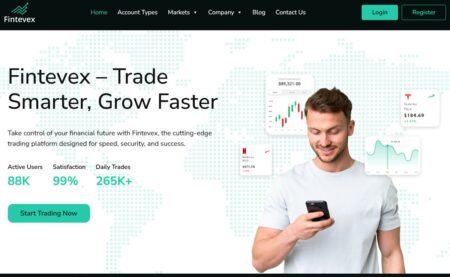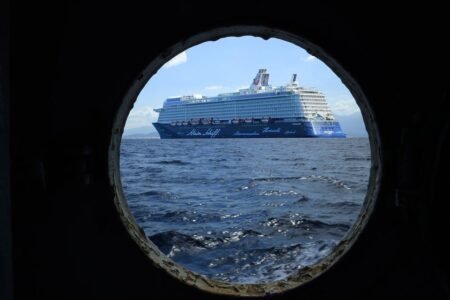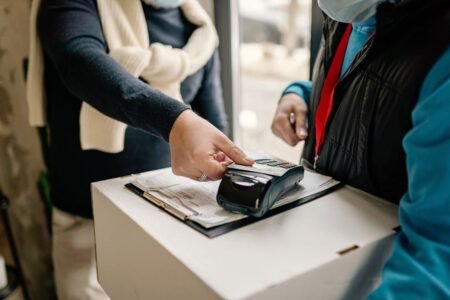The EU’s External Investment Plan will support more inclusive and sustainable development in Africa and the European Neighbourhood. It will boost public and private investment and thus address some of the obstacles to growth in our partner countries.
Advertisement
Why do we need an External Investment Plan?
Some of the main challenges for developing countries remain achieving inclusive and sustainable growth and creating jobs. The investment climate and the overall policy environment in the EU Neighbourhood and in Africa are not always supportive of private sector investment. This is particularly evident in fragile, conflict- and violence-affected countries, some of which are important countries from where irregular migrants originate.
Foreign Direct Investment (FDI) and other private financial flows have declined across developing countries since the 2008 financial crisis. In 2012, only 6% ( 34.6 billion) of total global FDI to developing countries went to countries on the fragile states list. This was an average investment of 27 per capita compared to an average of 128 per capita in other developing countries. Among those on the fragile states list, the majority of FDI is attracted by resources-rich countries, with 72% concentrated in ten countries in 2012. This clearly marks a gap in investment and the added-value targeted action by the European Union can have.
What is new about the EU External Investment Plan?
The EIP goes beyond classical development assistance to support sustainable investments in an integrated way. Its innovative and holistic approach complements the toolbox of our development cooperation and increases its impact on the ground. It will attract private investors where viable business proposals meet sustainable development needs, and where limited public funds can attract private money. It will bridge blending, technical assistance and strategic policy and political dialogue in order to improve investment climate and business environment. In addition, to help investors and entrepreneurs access the new products, a one-stop-shop web portal is being set up by the EIP Secretariat.
How does it work?
The integrated approach of the EIP will work by combining three pillars:
Pillar 1: The EIP will make use of a new generation of financial instruments, such as guarantees, risk sharing instruments, as well as the blending of grants and loans for sustainable development projects. The newly created European Fund for Sustainable Development (EFSD) will help to leverage additional financing for development, notably from the private sector. By offering an innovative new EFSD guarantee, we will encourage investors to engage in Africa and the EU Neighbourhood, where they would not usually go, for example in contexts that are more risky than others. Investments will mainly be targeted to improve economic and social infrastructure and proximity services, and to provide support to SMEs, microfinance and job creation projects.
Pillar 2: Through its substantial technical assistance, the EU will support local authorities, as well as micro, small and medium companies or cooperatives in defining better and viable projects. Stepped up technical assistance linked to concrete innovative financial instruments and projects will result in more successful projects, which would have much greater impact on development.
Pillar 3: The EU will step up structured political and private sector dialogue with partner countries and other stakeholders. This will help improve the investment climate and business environment.
The EU is a unique development and foreign policy actor, with over 50 EU Delegations on the ground in Africa and the European Neighbourhood. The EU already has dialogues with partner countries, addressing key issues like human rights, good governance, etc. With the EIP, we will more systematically address constraints to investments for sustainable development and business. This will also help ensure coherence with other external EU policies.
In the EU Neighbourhood, the EU will use the existing policy dialogue structures established under the Association Agreements or similar types of bilateral agreements to discuss the investment climate with the national authorities. These discussions will aim to promote policy reforms that contribute to a better investment climate for local and foreign investors. In parallel, the EU will also promote a stronger engagement with European businesses and strengthen local coordination mechanisms.
Where will the money come from? What is the funding for the EIP?
With a contribution of 4.1 billion from the European Commission, the EIP is expected to leverage more than 44 billion of investments by 2020. The funding instrument for the EIP is the European Fund for Sustainable Development (EFSD), which consists of (a) the EFSD Guarantee with a value of 1.5 billion and (b) 2.6 billion from the Blending facilities under the African Investment Facility (AfIF) and the Neighbourhood Investment Facility (NIF). The resources come from the EU budget and other sources, including the European Development Fund. The EFSD is open to contributions from EU Member States, EFTA countries and other partners. If the latter matched the EU contribution, we could leverage as much as 88 billion by 2020.
How did you get to the figure of 44 billion?
We expect our contribution of 4.1 billion to leverage a total of 44 billion. This is based on calculated assumptions and experience of the last ten years in blending operations in our partner countries. It also builds on the experience in Europe, acquired through the Investment Plan for Europe (the ‘Juncker Plan’). However, our estimate of the leverage factor in partner countries is more conservative and cautious than in Europe.
Do you expect Member States to contribute? How?
Yes, the fund is open to contributions from EU Member States, EFTA countries and other partners. If the latter matched the EU contribution, we could leverage as much as 88 billion. Member States could contribute to the EIP in the form of direct financial contributions or as a second-loss guarantee. This means that they would be relied upon only in the second stage if the EU Guarantee has been fully depleted.
Contributions from the Member States will benefit from the overall advantages of the EIP, including increased coherence, better access to sustainable finance, technical assistance and focussed effort to improve investment climate and business environment.
What is an “investment window” and which do you foresee?
Investment windows are targeted areas for investments, with an expected geographical and/or sectoral focus of activities.. The EIP aims to support areas where investment would not otherwise go. The first five investment windows are: “Sustainable Energy and Connectivity”, “Micro, Small and Medium Enterprises (MSMEs) Financing”, “Sustainable Agriculture, Rural entrepreneurs and Agribusiness”, “Sustainable Cities”, and “Digital for Development”. New investment windows may be established in the future.
What are the conditions to get support under the EIP?
Projects have to be made in Africa or the European Neighbourhood and have a clear sustainable development objective. They should contribute to economic and social development, with a focus on sustainability and job creation, particularly for youth and women. Investment proposals have to provide adequate risk sharing, be economically and financially viable, socially and environmentally sustainable, not distort market competition and address market failures or sub-optimal investment situations. Operations should be additional i.e. financing would otherwise not be available, and market distortion and crowding out of commercial finance has to be avoided.
Who will be eligible to receive support through the EIP?
Commission funding from the EIP will be granted under specific investment window to eligible financial institutions assessed by the Commission, for example development banks. Currently eligible financial institutions include: The European Investment Bank (EIB), The European Bank for Reconstruction and Development (EBRD), The African Development Bank (AfDB), Agence Française de Développement (AFD), Casa di Depositi i Prestiti (CDP), Compañía Española de Financiación del Desarrollo (COFIDES), Deutsche Investitions- und Entwicklungsgesellschaft (DEG), Kreditanstalt für Wiederaufbau (KfW), Agencia Española de Cooperación Internacional para el Desarrollo (AECID), Nederlandse Financierings-Maatschappij voor Ontwikkelingslanden N.V. (FMO), Promotion et Participation pour la Coopération économique (PROPARCO).
Businesses who want to benefit from the EIP are then encouraged to contact the financial institutions managing the investment windows, to get informed about the available instruments for their project or if they are interested in investing.
How can an individual company submit a project?
A web portal and Secretariat specifically designed for the EIP will be operational once implementation begins and will provide a ‘one-stop-shop’ for all those interested in working with the EIP. Companies will also be able to request access to funding and a guarantee for an investment project directly with the EIP Secretariat, which will put the company in touch with an eligible financial institution. Should the project not qualify for the EFSD, the Secretariat will suggest to the company a list of relevant financial institutions, which are active in the respective region of interest.
How can companies based in Africa and the Neighbourhood benefit? How can European companies benefit?
The EFSD support will be mostly implemented via eligible partner financial institutions (see above). The European Commission will consider project-based partnerships with private sector actors in Europe and in partner countries. Increasing the visibility of investment opportunities outside the EU, in cooperation with partner countries, will further benefit all involved.
Increased investment will be accompanied by focussed work to improve the business environment and investment climate in the partner countries, as well as significant technical assistance. This will create a “win-win” situation: for the local private sector to become more active and for European companies who wish to do business in developing and neighbourhood countries.
Direct interaction with companies and their associations will also be sought through dialogue to encourage more private sector engagement and market-based solutions in sustainable agriculture and agribusiness, sustainable energy, infrastructure and social sectors.
What kinds of projects will be funded under the EFSD Guarantee? Can you give examples?
The EFSD Guarantee can cover specific risks in investment projects and thus encourage investors to participate. For example, in renewable energy projects, the EFSD Guarantee can help to alleviate short-term liquidity problems and that way encourage investors to get on board.
A successful example of a project previously supported by the Commission in the energy sector is the Electrification Financing Initiative, or ElectriFI. By addressing the lack of access to seed, mid- and long-term capital the project aims to facilitate access to reliable, affordable and sustainable electricity and energy services for populations in rural, underserved areas.
A similar project in the field of Small and Medium Enterprises is the SANAD Fund, which provides loans, subordinated debt, guarantees and equity financing to local partner institutions for on-lending to micro, small and medium enterprises (MSMEs) and thus fuels their growth in the Middle East and North Africa. As these enterprises account for 60% of GDP and 70% of employment, they are crucial to a vibrant economy and job market. In addition, a Technical Facility, which is co-financed by the EU with 2 million, offers capacity building and support to Private Finance Initiatives, hence increasing the sustainability of the overall approach.
The Boost Africa initiative uses a combination of investment tools, technical assistance and entrepreneur training to attract investors and develop an efficient entrepreneurial infrastructure by maximising the support to MSMEs at the earliest and riskiest stages of their development.
The EURIZ project helps the financially underserved MSME (green, agricultural, women-owned, start-ups and others) to receive loans for business development and sustainable jobs by providing guarantees.
The Green for Growth Fund (GGF) is a specialised fund initiated by EIB and KfW to promote energy efficiency and renewable energy investments in Southeast Europe, Turkey, and the European Neighbourhood. GGF provides refinancing to financial institutions to enhance their participation in energy sectors and also makes direct investments in renewable energy projects. It also benefits from a technical assistance facility. The EU contribution is of 70 million in the form of equity.
The Climate Investor One is an investment fund managed by FMO and aiming to deliver sustainable energy at affordable prices in emerging markets. This fund supports energy projects from beginning to end, attempting to address current market failures and inefficiencies at every step of the project. The EU contribution is 30 million in the form of 25 million of risk capital and 5 million of reimbursable technical assistance.
The European Commission will build on and replicate positive examples like these with the help of the EIP. Projects under the EIP will focus on key sectors identified as essential in the creation of decent, sustainable jobs, the development of partners’ economies, and their integration into the global economy. Examples of such sectors include renewable energy, projects that aim to fight climate change, and support to local Micro, Small and Medium Enterprises. Other sectors such as agriculture are also likely to be included.
How are you going to make sure that will actually translate into sustainable growth and decent jobs?
The European Commission will closely monitor the progress of the EIP. It will report annually to the European Parliament and the Council on the EIP financing and investment operations. A report will also be presented to the public and all relevant stakeholders, including civil society.
In line with EU transparency policies, eligible counterparts shall proactively and systematically make publicly available information relating to all financing and investment operations covered by the EIP, taking into account the protection of confidential and commercially sensitive information. The Commission will communicate with citizens and stakeholders by all means, including through its website and dedicated EIP web portal.
Source: European Commission







